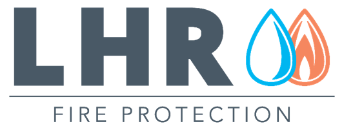Fire sprinkler systems are among the most effective and essential tools for fire safety in both residential and commercial buildings. Whether you’re looking into fire sprinklers installation or wondering how these systems work, understanding their functionality is crucial to ensuring you’re prepared in case of an emergency.
In this article, we’ll explore the science behind fire sprinklers, how they detect fire, the different types of systems available, and how to maintain them for optimal performance.
Understanding Fire Sprinkler Systems
The Importance of Early Fire Detection
One of the most significant benefits of fire sprinklers is their ability to detect fires early. Unlike traditional fire alarm systems, which only warn occupants of a fire, sprinklers respond immediately to the fire’s heat, often preventing the fire from spreading. This early detection helps reduce the damage caused by the fire and can save lives.
Types of Fire Sprinkler Systems
There are several fire sprinkler systems, each with unique features suited for different environments. Here are the most common:
Wet Pipe Systems
The most commonly used sprinkler systems, wet pipe systems, are always filled with water. When a sprinkler head is activated by heat, water is immediately discharged onto the fire.
Dry Pipe Systems
The pipes are filled with pressurized air or nitrogen instead of water in dry pipe systems. When the sprinkler head is activated, the air is released, allowing water to flow into the pipes and extinguish the fire. These systems are ideal for areas that are subject to freezing temperatures.
Pre-Action Systems
Pre-action systems combine features of wet and dry systems. The pipes remain dry until the system detects a fire, at this point, a valve opens, filling the pipes with water. However, the sprinkler heads remain closed until heat activates them. This system is used in environments where accidental water discharge could cause damage.
Deluge Systems
Deluge systems are designed for high-risk areas where a large volume of water is needed to control a fire. The pipes are always open, and all sprinkler heads release water simultaneously when the system detects heat or smoke. These systems are typically used in industrial settings.
How Fire Sprinkler Heads Work
The Role of the Sprinkler Head
The sprinkler head is the key component of a fire sprinkler system. When a fire occurs, the sprinkler head’s activation mechanism allows water to flow into the affected area. Different types of sprinkler heads are used depending on the application and environment.
Glass Bulb Sprinkler Heads
The most common type of sprinkler head is a glass bulb head, which contains a small glass bulb filled with a heat-sensitive liquid. When the liquid expands due to heat, the bulb breaks, releasing water to douse the fire.
Bimetallic Sprinkler Heads
These heads use a metal alloy that bends when exposed to heat. The bending of the metal activates the sprinkler system, allowing water to flow.
Fritted Glass Sprinkler Heads
These sprinkler heads use a special glass that shatters when it reaches a certain temperature. The breakage triggers the release of water.
The Activation Process
The activation process of a fire sprinkler system involves several steps:
Temperature Rise
When a fire begins, the temperature in the affected area rises. As the heat increases, it eventually reaches the threshold temperature that triggers the sprinkler head.
Glass Bulb Rupture
In glass bulb sprinkler heads, the heat causes the liquid inside the bulb to expand, breaking the glass and releasing water. In other types of heads, heat causes mechanical activation.
Water Discharge
Once the sprinkler head is activated, water is discharged onto the fire to control or extinguish it. The water spreads across the fire, cooling it down and preventing further damage.

Factors Affecting Sprinkler Activation
Several factors influence the activation of fire sprinklers, including:
Temperature Thresholds
Each sprinkler head is designed to activate at a specific temperature. The type of sprinkler used determines the heat required to break the glass or activate the mechanical system.
Heat Release Rate
The rate at which the fire releases heat can affect how quickly a sprinkler head activates. Faster-burning fires will trigger sprinklers more rapidly than slower, smoldering fires.
Fire Location and Proximity to Sprinkler Head
The location of the fire in relation to the sprinkler head also plays a role in activation. Sprinklers closest to the fire will be the first to activate.
When Are Fire Sprinklers Required in Residential Buildings?
In residential buildings, fire sprinklers are typically required in certain types of homes, especially multi-family dwellings, high-rise buildings, and new constructions. Local codes and regulations may vary, but installing sprinklers is highly recommended for enhanced safety.
When Are Fire Sprinklers Required in Commercial Buildings?
In commercial buildings, fire sprinklers are generally required in most types of businesses, especially high-risk ones, such as hotels, hospitals, and factories. Local fire safety codes will dictate whether sprinklers are necessary in specific areas.
Maintaining Fire Sprinkler Systems
Regular Inspections and Testing
Maintaining your fire sprinkler system is crucial to ensure it functions properly in an emergency. Regular inspections are required by law and should be performed by a licensed professional. This ensures that all components, including sensors and sprinkler heads, are in working order.
Importance of Professional Maintenance
Professional maintenance ensures the system is free of obstructions, corrosion, or other issues hindering its effectiveness. It also includes testing of the water pressure and sprinkler activation mechanisms.
Ensuring Optimal Fire Protection with Expert Sprinkler Services
Fire sprinkler systems play a vital role in protecting your property and ensuring safety during a fire emergency. Understanding how they detect and respond to fires is essential for maintaining an effective fire protection plan. Regular inspections and professional maintenance are crucial for optimal performance. Contact us today at LHR Fire Protection for reliable fire sprinkler installation, maintenance, and inspections. Let our experts help you safeguard your home or business from fire risks.



